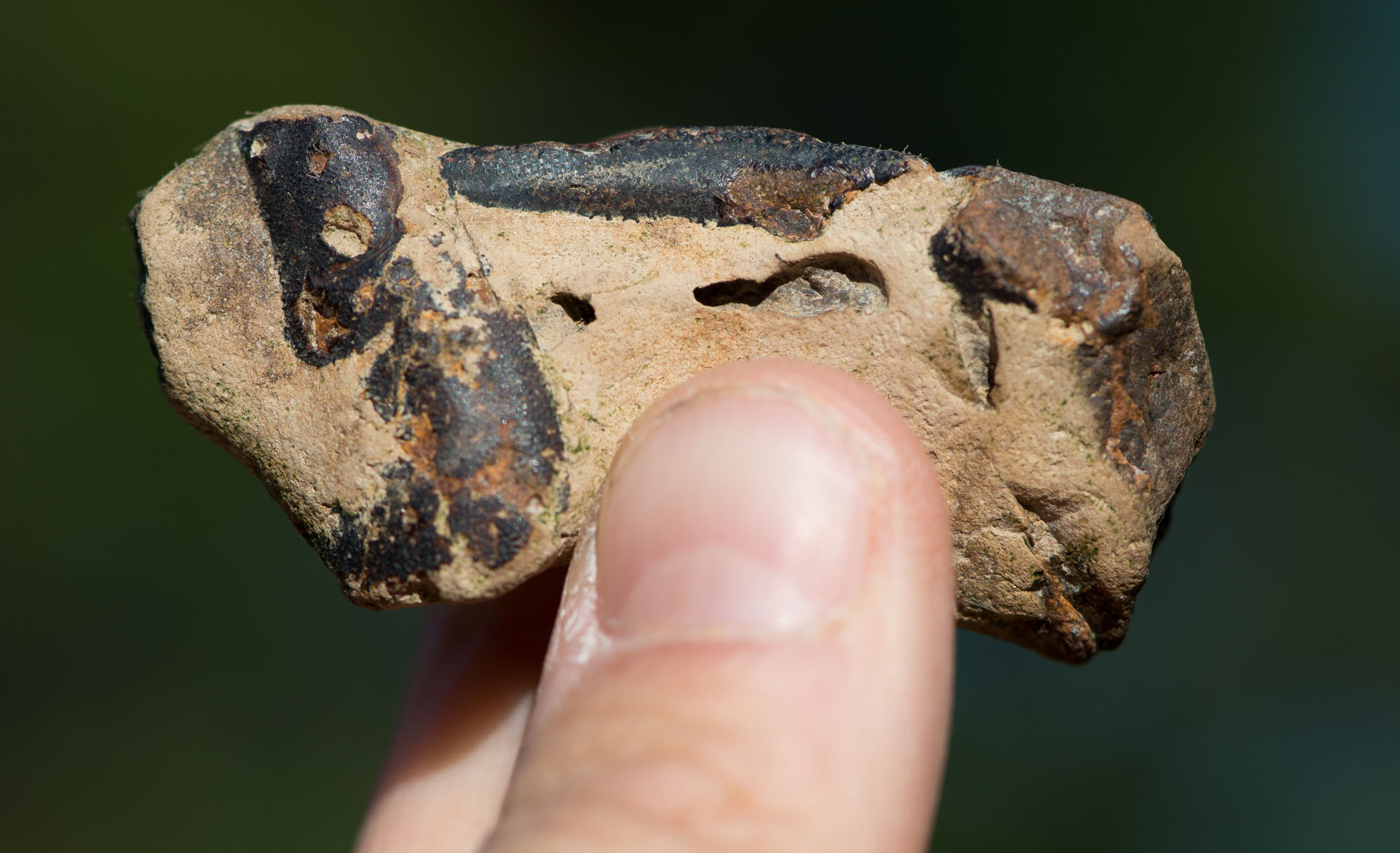Steeple Bay is very similar to Maylandsea. It is very productive for lobster fragments, which are found in small yellow nodules, and for crabs. There are several species of lobster that can be collected here and it is also rich in microfossils. All fossils are washed out of the London Clay from the low cliffs and foreshore.
DIRECTIONS
♦ Head towards Mayland in Essex. Go through the town and keep going until you reach the village of Steeple. From here, take the first left heading towards the holiday camp. On the way, you will pass Hall Farm. Parking is best within the campsite. However, you MUST ask permission to park here.
♦ It is best to visit off-peak, when the campsite is not busy. As the road to the holiday park is narrow, the nearest alternative parking is in the village of Steeple itself, which means an additional 2km walk.
♦ Once you are in the campsite, head towards the tents, which are near to the beach. From there, walk down to the shore, where small cliffs are clearly visible.
♦ Ref: 51.70236°N, 0.77513°E
PROFILE INFO
FIND FREQUENCY: ♦♦♦♦ – Steeple Bay can at times be very productive, but much depends on the beach and tidal conditions. You can usually find lobster fragments, sharks’ teeth and, occasionally, exceptional lobster specimens. It is also highly productive for microfossils. These can be found by taking home samples of the fine shingle and grit exposed on the foreshore. Just a small amount will yield forams, sea urchin spines, teeth, bone fragments, ostracods and much more.
CHILDREN: ♦♦♦♦ – This location is suitable for older children. However, much of the lower foreshore is very soft and muddy, and it is possible to become stuck in the mud. Keep away from these areas.
ACCESS: ♦♦♦ – Access is good, providing that permission is given from the camp site owners to park there. Normally, they are quite happy for visitors, providing that the site isn’t busy and there are no more than a couple of cars wishing to park. From here, it is only 500m to the foreshore.
TYPE: – This is a foreshore location and a ‘hands and knees job’. By crawling along the beach, you should be able to find the fossils among the shingle. It is best visited on a warm, dry day.
FOSSIL HUNTING
Steeple Bay is extremely similar to Maylandsea in that Sharks’ teeth, fish bones and teeth, and vertebrae can all be found, with the most common finds being lobster pieces in small, light yellow nodules. The carapaces, claws and other body parts can be seen sticking out of these nodules. Whole lobsters can also be found, but are obviously less common. There are several different species of lobster present, with one species that has not been recorded from Maylandsea, (Homarus morrisi). You can also find the crab Londinimola williamsi, but the location does have significantly fewer species of shark and fish.
Other fossils include seeds, bivalves, freshwater gastropods, pieces of crinoids and crabs.
Most fossils from Steeple Bay are found by walking along the extensive foreshore. However, it is very easy to miss smaller (and sometimes more important) finds by just walking along the shores, so you may need to crawl on your hands and knees. Collecting is best done around two hours before low tide, during a warm, sunny day, when the foreshore has dried out. You might like to take something to lean on, otherwise you may get backache. The best place to look is along the tide line, where fossils get caught up in the seaweed and, below this area, where recent tides have shifted material.
Unlike Maylandsea, areas of shingle are limited and only occasionally appear. The fine grits and shingle on the foreshore can sometimes be highly rich in microfossils, yielding a large number of forams, sea urchin spines, crinoids, sharks’ teeth and other fish remains, and much more. These can be collected by taking home bags of grit and shingle from the foreshore and wet washing. A microscope or field lens will then be required to study them.

GEOLOGY
The London Clay (Eocene ~50 Mya) here is from Division B2, approximately one metre above the Isselicrinus zone. It is almost identical to Maylandsea. The cliff itself is no more than a metre high, but most of the exposures are found on the extensive foreshore.
This impressive platform of London Clay is revealed at low tide, with several species of fossil fish, crustaceans, crinoids, molluscs and pyritised fossil wood available for collection.

SAFETY
Common sense when collecting at all locations should always be used and you should be aware of tide times before you go. The lower foreshore is often silted up with mud, which can be deep in places. Avoid these areas, as it is easy to become stuck.
EQUIPMENT
Most fossils are collected by crawling along the beach on your hands and knees. Therefore, the only tools you are likely to need are knee pads. However, if you are interested in microfossils, take some sample bags and a small trowel. A hand lens is also very useful.
ACCESS RIGHTS
This site is a site of special scientific interest (SSSI). This means you can visit the site, but hammering the bedrock is not permitted. For full information about the reasons for the status of the site and restrictions, download the PDF from Natural England.
It is important to follow our ‘Code of Conduct’ when collecting fossils or visiting any site. Please also read our ‘Terms and Conditions‘
LINKS
♦ Buy Fossils, Crystals, Tools
♦ Location Discussions
♦ Deposits Magazine
♦ Join Fossil Hunts
♦ UK Fossils Network


















